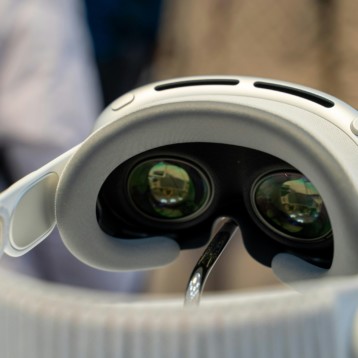Unlike most gliders, who move water or oil outwards from their inside hull via battery-powered motors and mechanical pumps, the Thermal Glider’s power source is the temperature differences of the ocean waters at different depths. Inside the glider’s engine are wax-filled tubes that expand when heated by the ocean’s warm waters, converting heat into mechanical energy.
The energy collected by the glider is used to change the glider’s buoyancy by pushing oil from a bladder inside the glider, to a bladder situated outside it. The wax is later cooled by the ocean’s deeper, cooler waters. “We are tapping a virtually unlimited energy source for propulsion,” said Fratantoni, an Associate Scientist in the WHOI Department of Physical Oceanography.
The Thermal Glider is composed of one main hull section, a solid machined nose dome, a wet section located in the rear, and two thermal tubes located below the hull. The Glider’s composite based wings are swept at 45 degrees to generate lift, while a vertical tail fin and rudder allow the vehicle to be steered horizontally.
The gliders have the potential to serve as valuable research instruments, as they can stay at sea for long periods of time (surfacing only to fix their location positions via the Global Positioning System and to report to a shore lab) and are capable of carrying a variety of sensors to collect different measurements. In addition, their quiet operation does not disturb the sea’s inhabitants and makes them ideal for acoustic studies. After further testing, Fratantoni plans to launch a fleet of thermal gliders for studies of the waters in the subtropical gyre of the North Atlantic. The gliders will be used in order to assess the ocean’s response to climate change.
“Gliders can be put to work on tasks that humans wouldn’t want to do or cannot do because of time and cost concerns,” commented Fratantoni.
TFOT recently covered a new concept car called “sQuba” – the world’s first “green” diving car. TFOT also reported on a “green” concept of a supertanker designed to transport large volumes of potable (i.e., drinkable) water, named the Aquatanker, and on SkySails – a new alternative propulsion system for ships.
More information about the new Thermal Glider can be found on Webb Research’s website.










